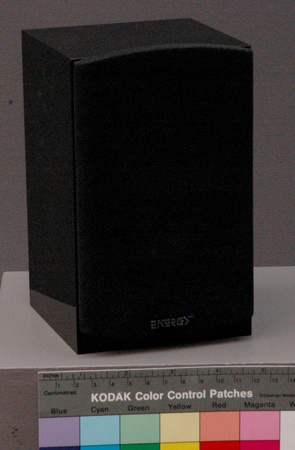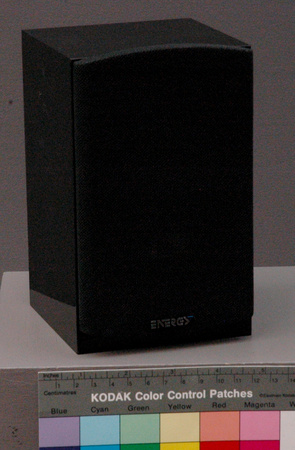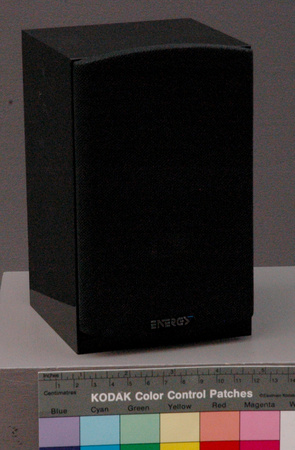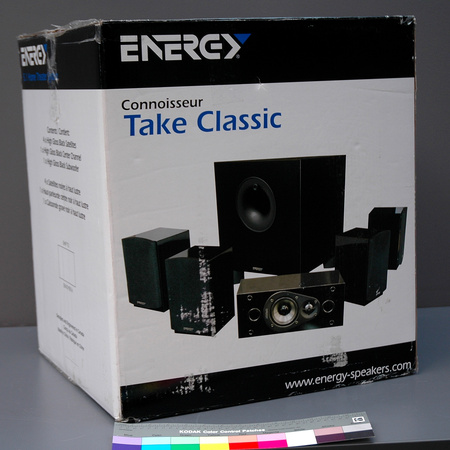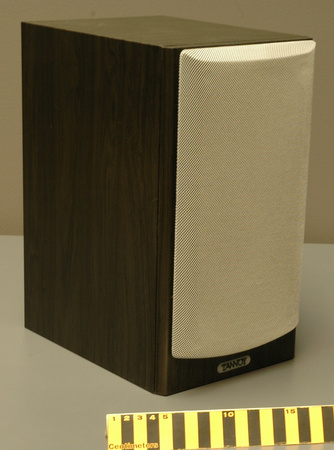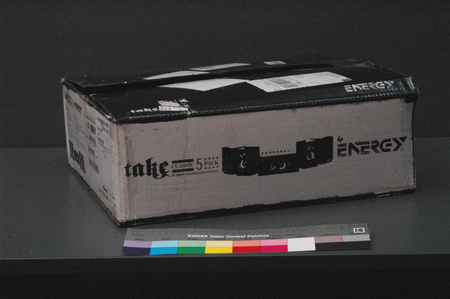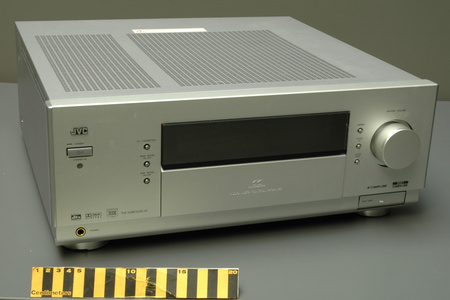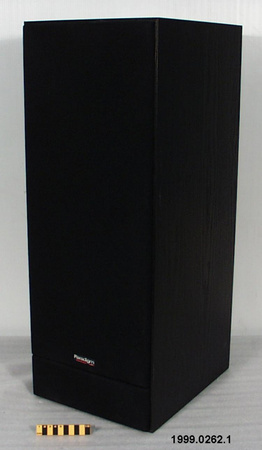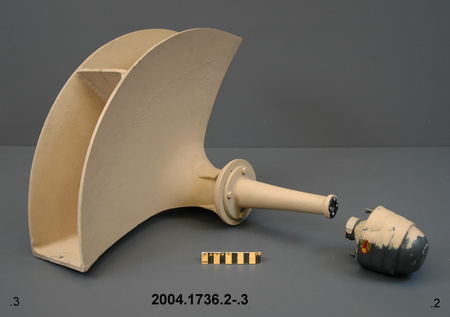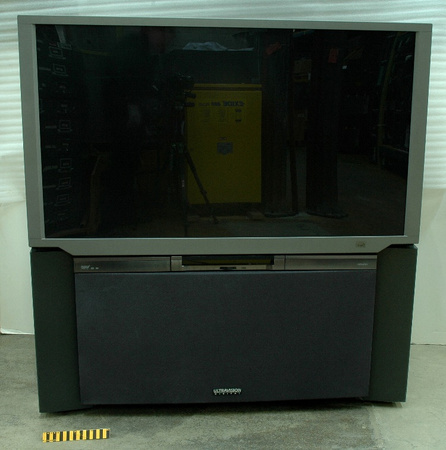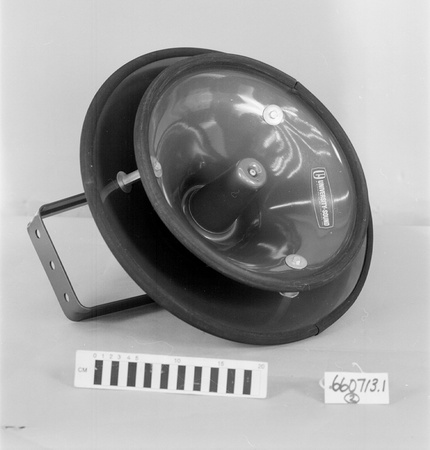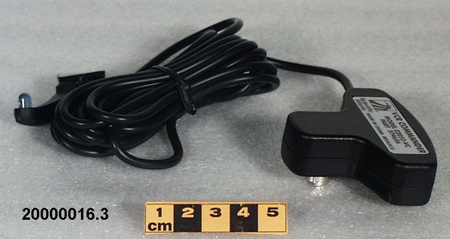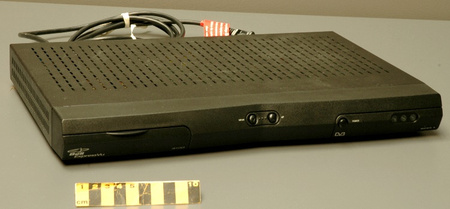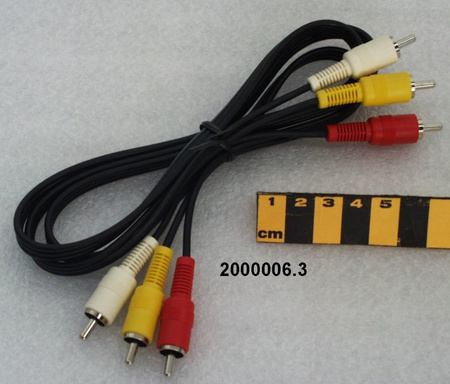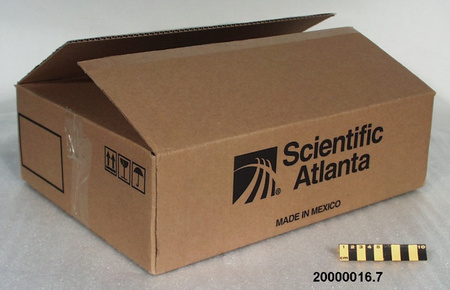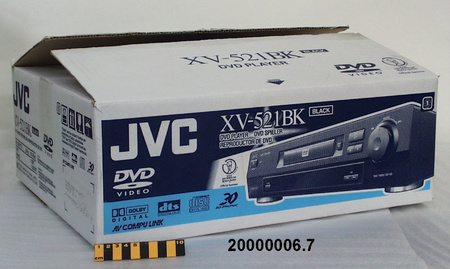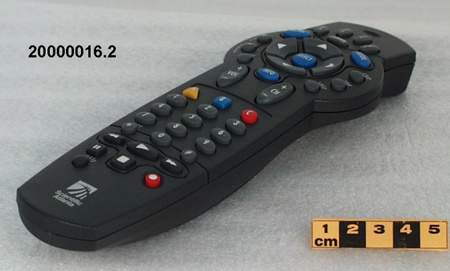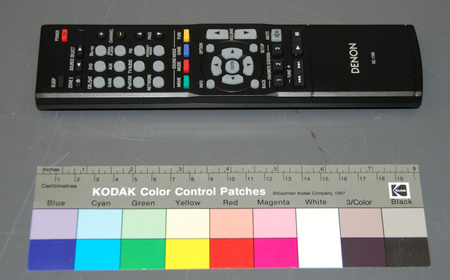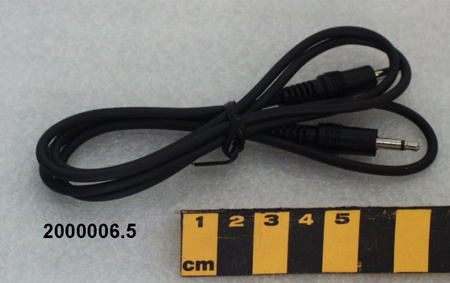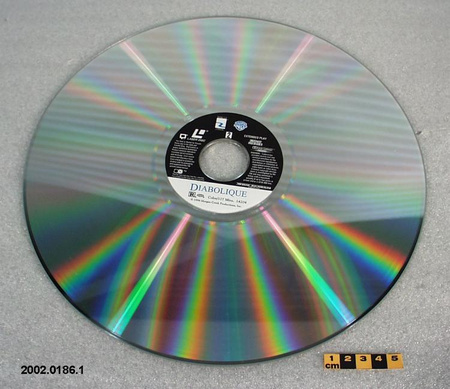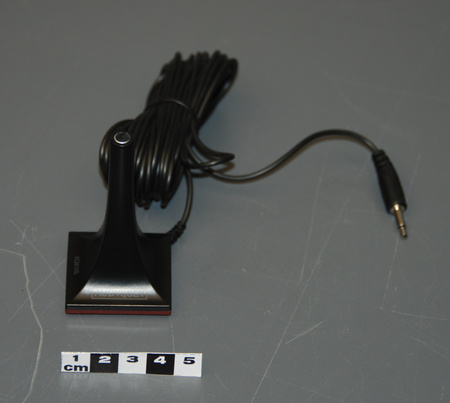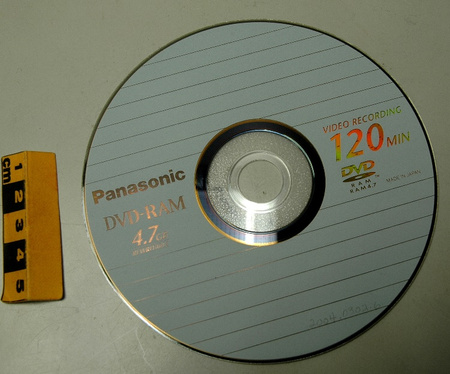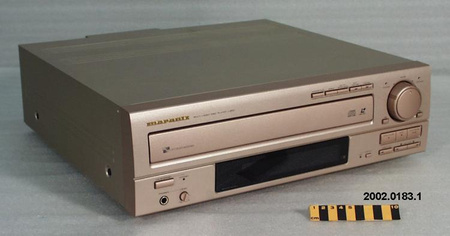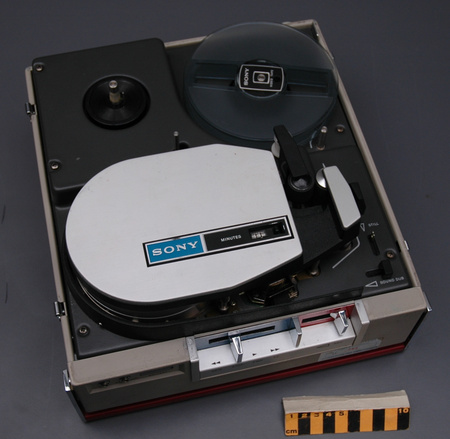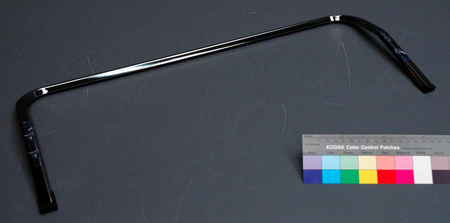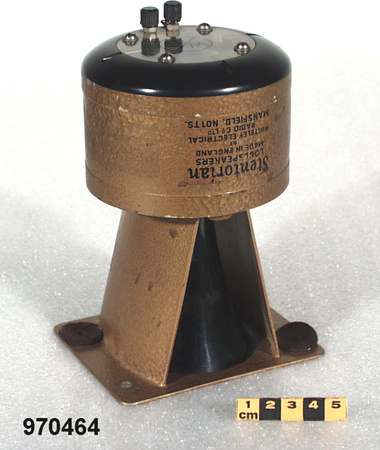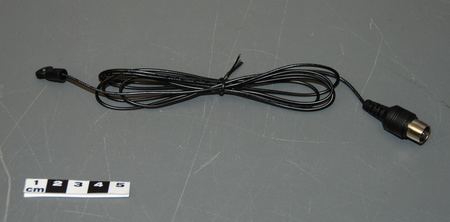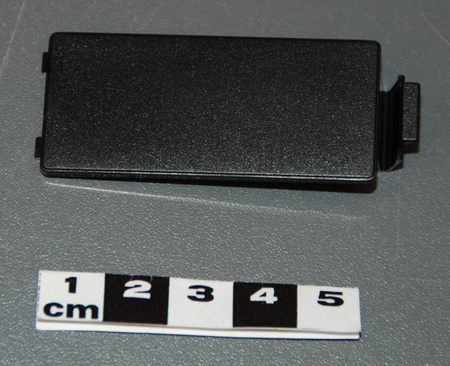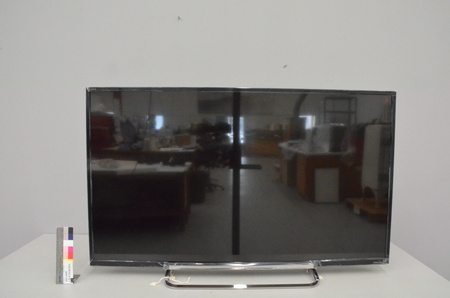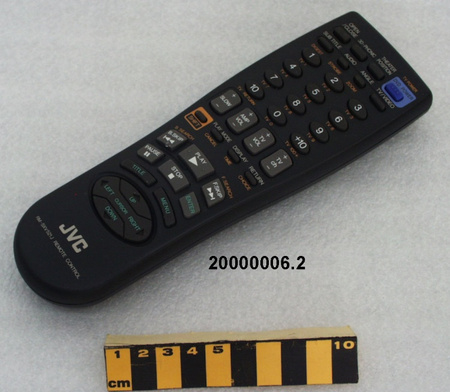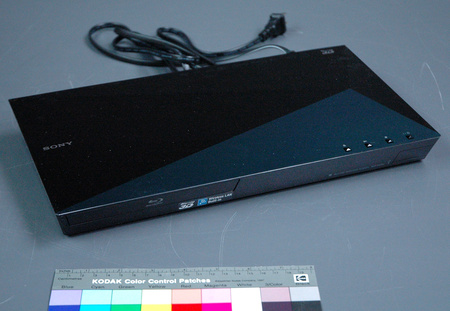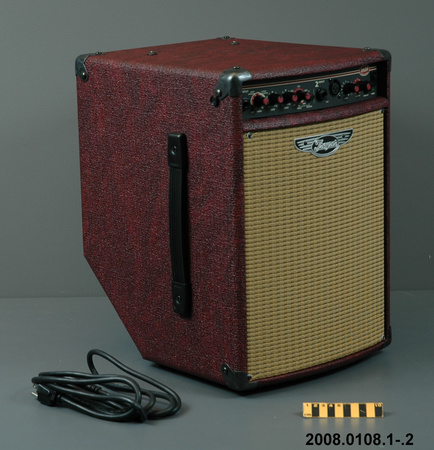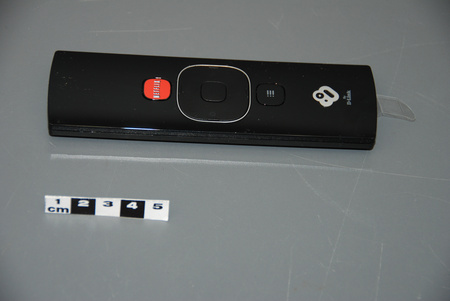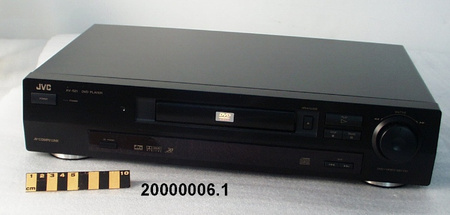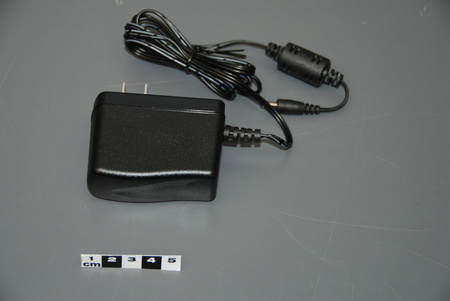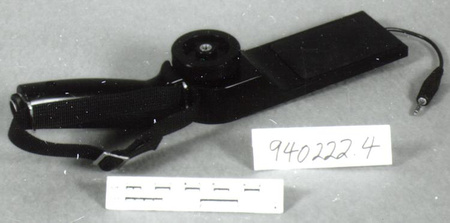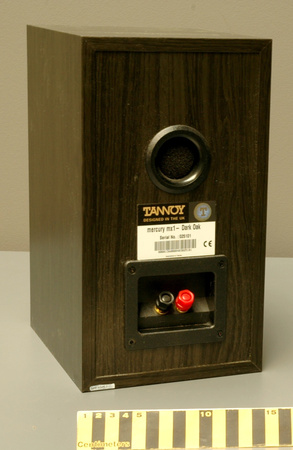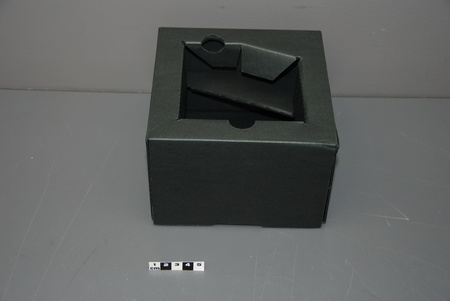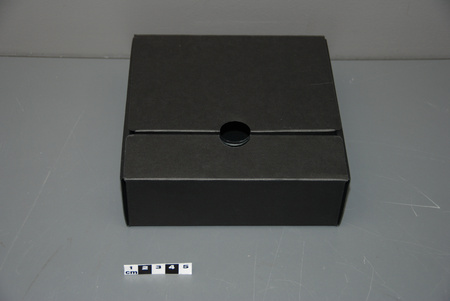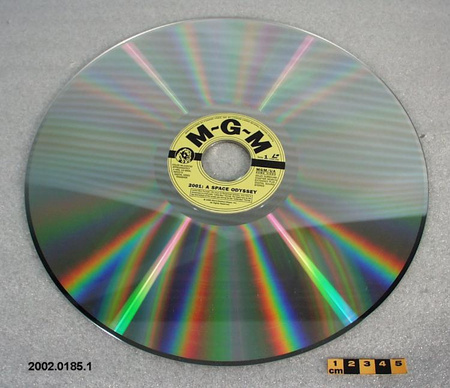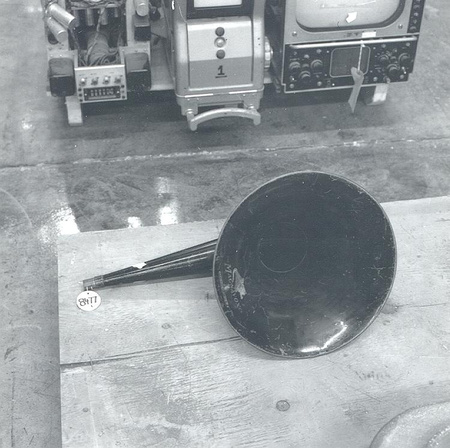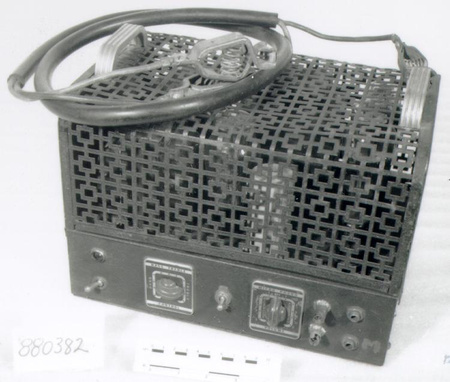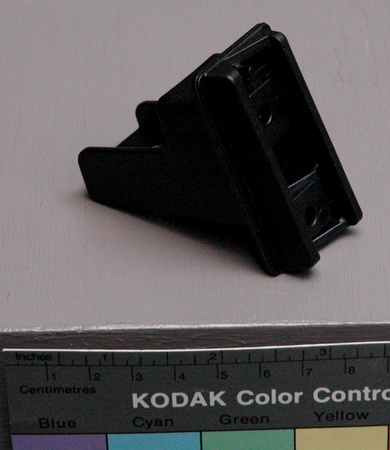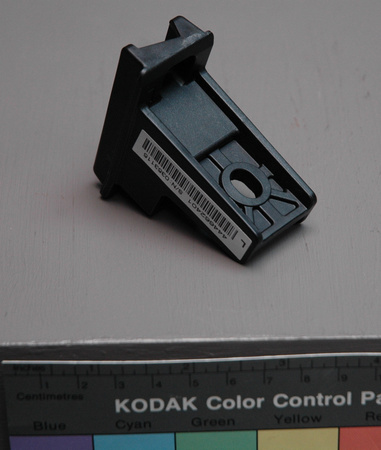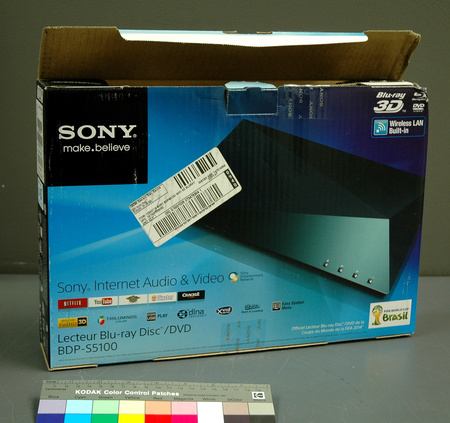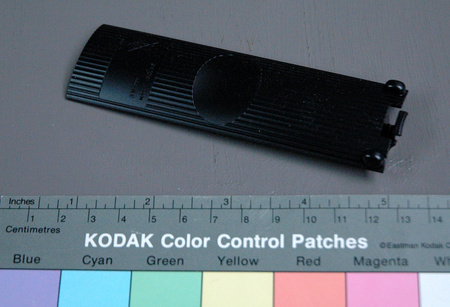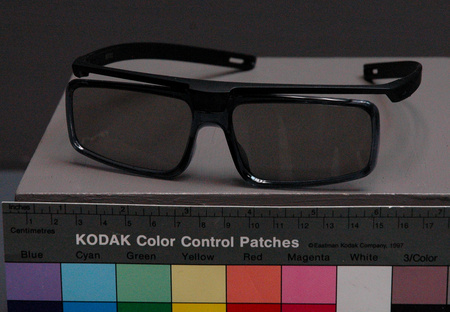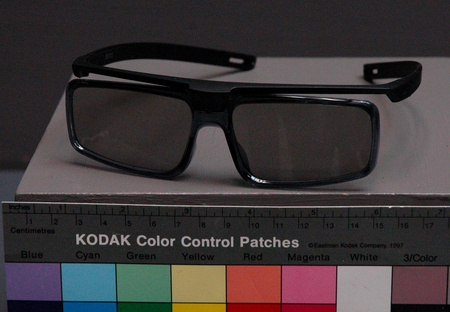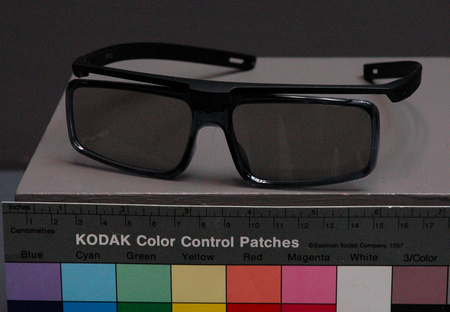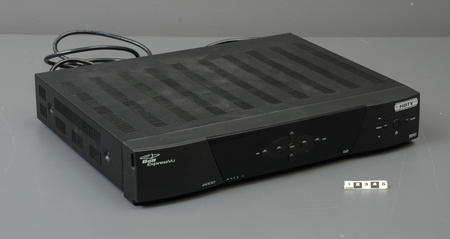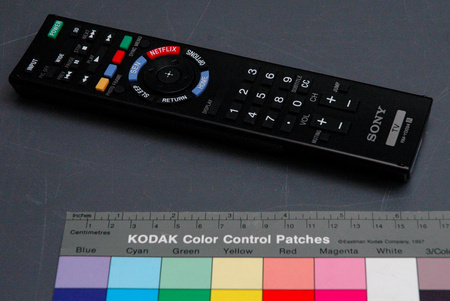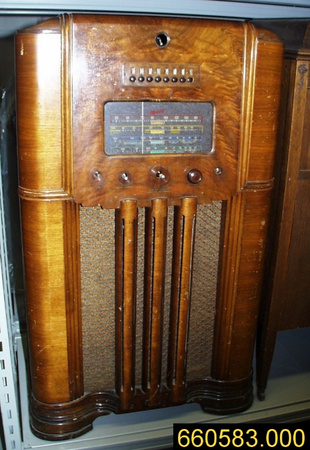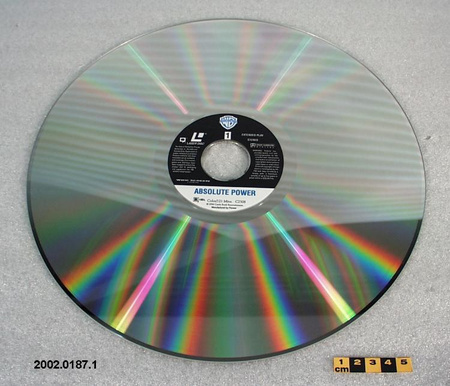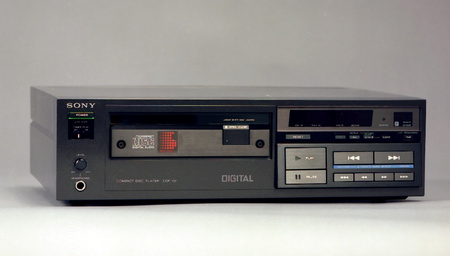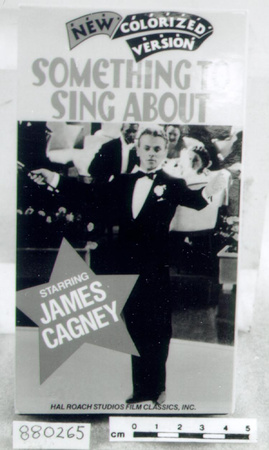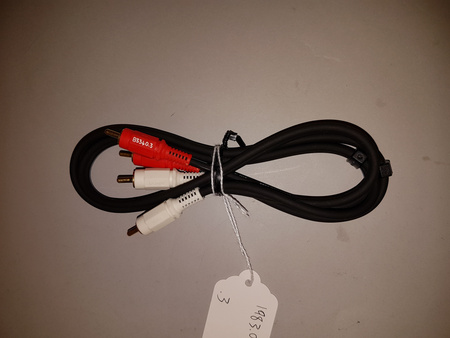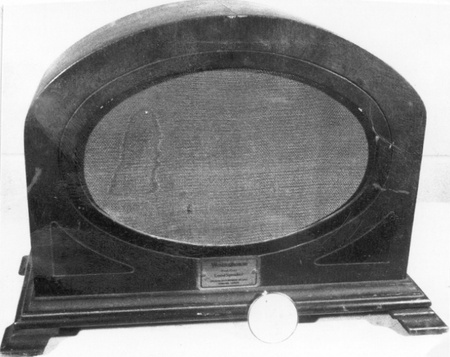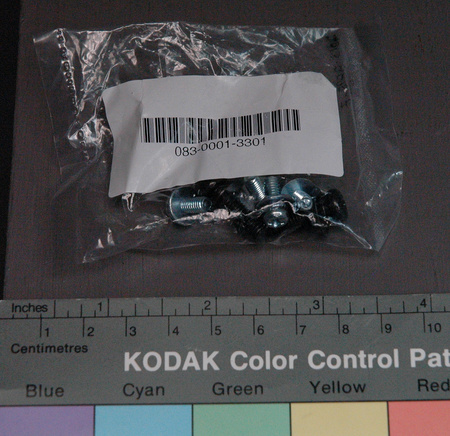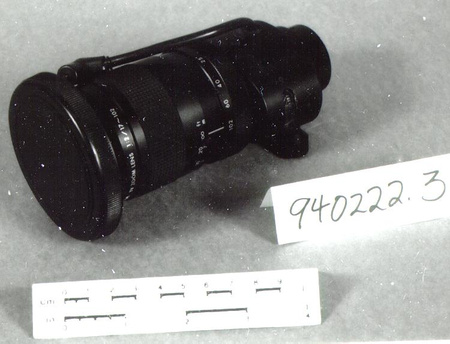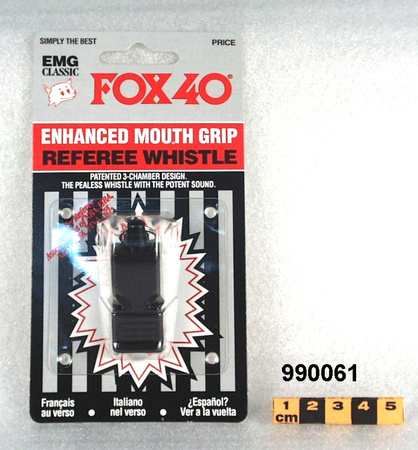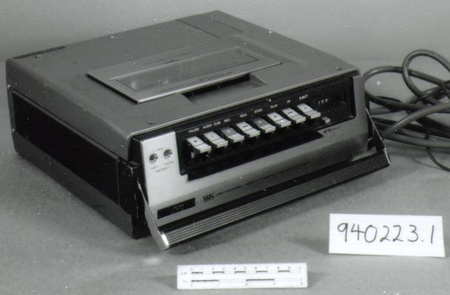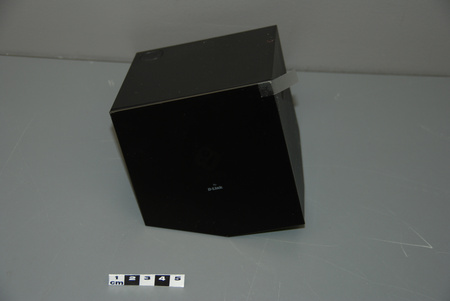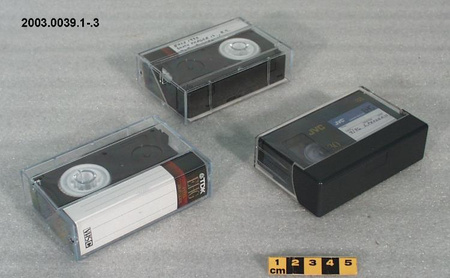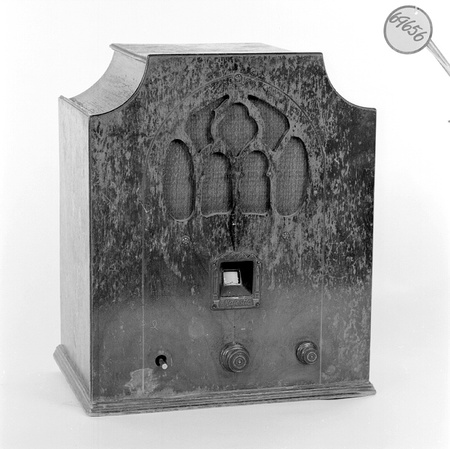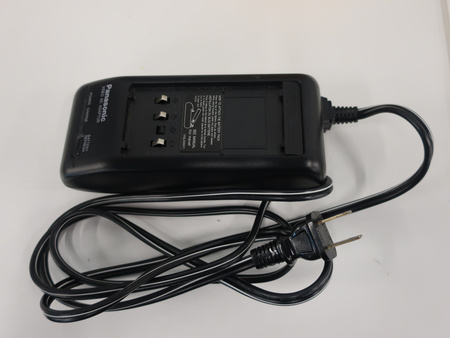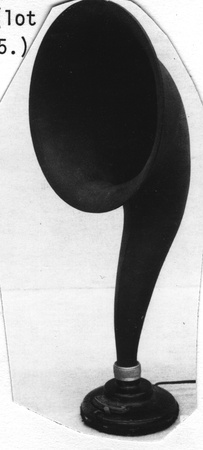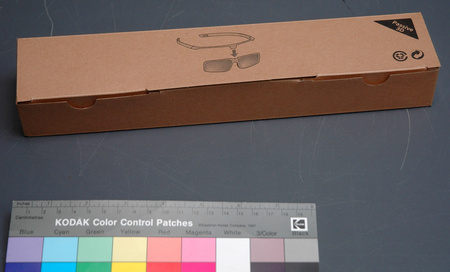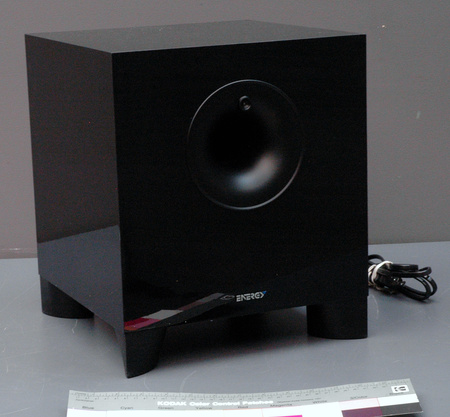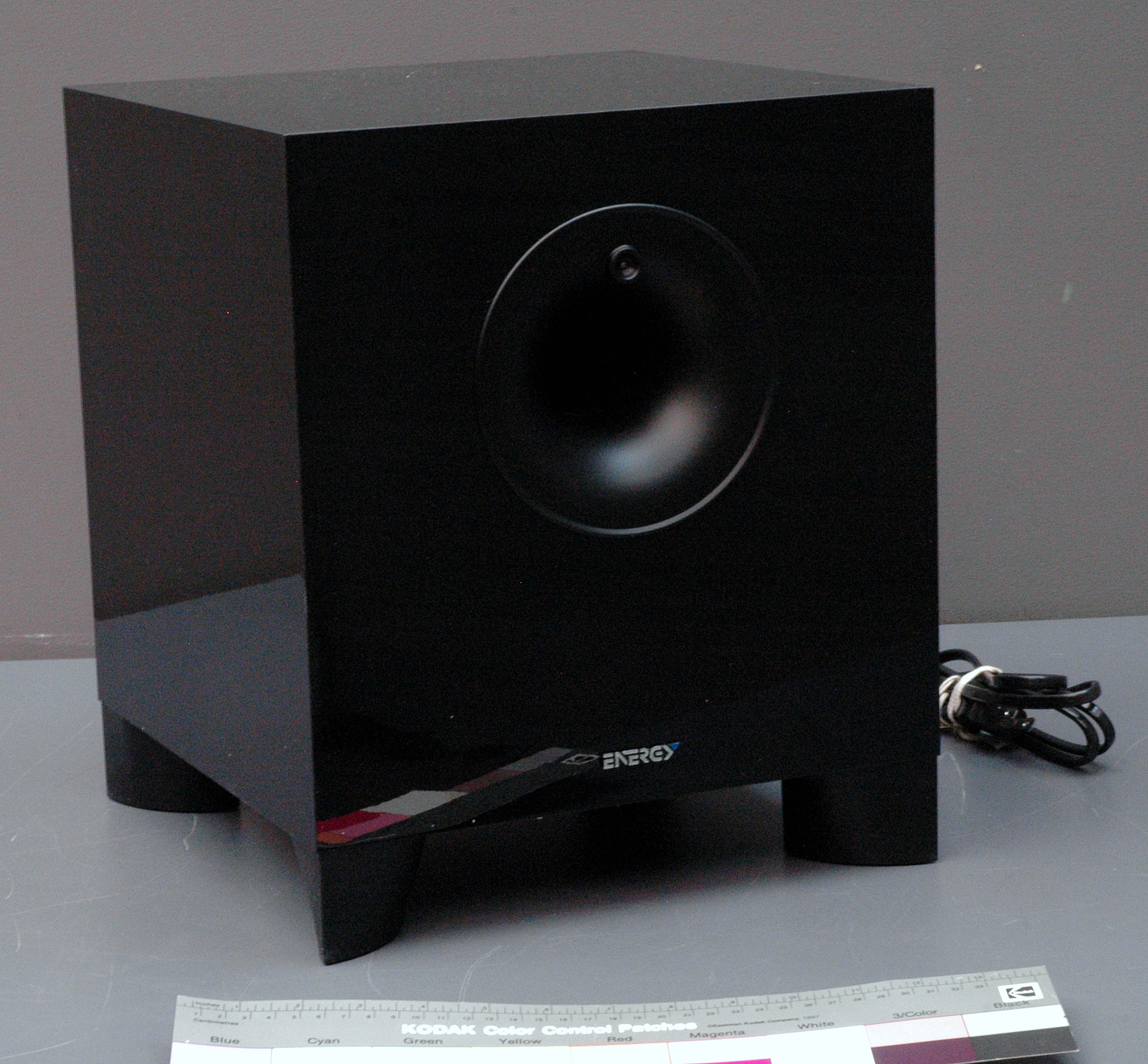Enceinte acoustique
Utiliser cette image
Puis-je réutiliser cette image sans autorisation? Oui
Les images sur le portail de la collection d’Ingenium ont la licence Creative Commons suivante :
Copyright Ingenium / CC BY-NC-ND (Attribution-NonCommercial 4.0 International (CC BY-NC 4.0)
ATTRIBUER CETTE IMAGE
Ingenium,
2013.0093.001
Permalien:
Ingenium diffuse cette image sous le cadre de licence Creative Commons et encourage son téléchargement et sa réutilisation à des fins non commerciales. Veuillez mentionner Ingenium et citer le numéro de l’artefact.
TÉLÉCHARGER L’IMAGEACHETER CETTE IMAGE
Cette image peut être utilisée gratuitement pour des fins non commerciales.
Pour un usage commercial, veuillez consulter nos frais de reproduction et communiquer avec nous pour acheter l’image.
- TYPE D’OBJET
- subwoofer
- DATE
- 2008
- NUMÉRO DE L’ARTEFACT
- 2013.0093.001
- FABRICANT
- Energy Speaker Systems
- MODÈLE
- ESW-8
- EMPLACEMENT
- Chine
Plus d’information
Renseignements généraux
- Nº de série
- 12271846
- Nº de partie
- 1
- Nombre total de parties
- 2
- Ou
- S/O
- Brevets
- S/O
- Description générale
- Square black synthetic speaker housing; red and black synthetic fittings; black synthetic covering on cord and plug head; silver and gold tone metal fittings visible.
Dimensions
Remarque : Cette information reflète la taille générale pour l’entreposage et ne représente pas nécessairement les véritables dimensions de l’objet.
- Longueur
- 33,0 cm
- Largeur
- 31,0 cm
- Hauteur
- 36,2 cm
- Épaisseur
- S/O
- Poids
- S/O
- Diamètre
- S/O
- Volume
- S/O
Lexique
- Groupe
- Communications
- Catégorie
- Télévision
- Sous-catégorie
- S/O
Fabricant
- Ou
- Energy
- Pays
- Chine
- État/province
- Inconnu
- Ville
- Inconnu
Contexte
- Pays
- Canada
- État/province
- Inconnu
- Période
- This model of subwoofer speaker available since 2008. This example is new/ never used.
- Canada
-
Between 1977 and 1986, the Canadian National Research Council ran a joint study with select Canadian speaker manufacturers to determine what measurable factors people equated with good-sounding loudspeakers. These listening trials indicated that flat frequency response, wide dispersion and low distortion were key factors. Energy, which is part of Klipsch Group, Inc., was actively involved in this project, and, with the results from this partnership, developed the Pro 22 speaker which became the benchmark for both NRC and the Canadian Broadcasting Corporation. In 1997 Energy introduced the Take 5 home theater system. In 2008, Energy released Take Classic 5.1 which Sound and Vision Magazine regarded as “a compact system that delivers beautiful sound and heavyweight value.” The Take Classic System was the first Energy product to be sold through a national retailer, The Source. 1990s Home theaters gained increasing popularity in the late 1990s with the development of DVD-Video, Dolby Digital and DTS 5.1-channel audio and high-quality front video projectors. In the 2000s, developments such as high-definition video, Blu-ray Disc, and newer high-definition 3D display technologies enabled people to enjoy a cinematic feeling in their own home at a more-affordable price. [Ref. 1] - Fonction
-
Specific: To reproduce low-pitched audio frequencies (bass). - Technique
-
The first subwoofers were developed in the 1960s to add bass response to home stereo systems. Subwoofers gained greater public awareness in the 1970s with the introduction of Sensurround, a joint sound effects project between Cerwin-Vega and Universal Studios, which produced loud low-frequency sounds through large subwoofers. With the advent of the compact cassette and the compact disc in the 1980s, the easy reproduction of deep and loud bass was no longer limited by the ability of a phonograph record stylus technology. During the 1990s, DVDs were increasingly recorded with "surround sound" processes that included a Low-frequency effects (LFE) channel which could be heard using the subwoofer in a home theater system. It was also during this decade that subwoofers became increasingly popular in home stereo systems, custom car audio installations, and in PA systems. By the 2000s, subwoofers became almost universal in sound reinforcement systems in nightclubs and concert venues. The typical frequency range for a subwoofer is about 20–200 Hz for consumer products, below 100 Hz for professional live sound, and below 80 Hz in THX-approved systems. Subwoofers are intended to augment the low frequency range of loudspeakers covering higher frequency bands. This is a bass reflex subwoofer which means that its design enhances the reproduction of the lowest frequencies that it generates. It is also an active subwoofer, as it includes a built-in amplifier. [Ref. 1] - Notes sur la région
-
Inconnu
Détails
- Marques
- "ENERGY" appears in raised print on speaker front. All controls, connections, etc. labelled. Other markings on speaker housing include "ENERGY ®/ SPEAKER SYSTEMS/ ESW-8/ [Canada wordmark symbol]/ Designed and Engineered in Canada/ Concu au Canada/ Made in China/ Fabrique en Chine", "120V ` 60Hz 1.0A" and "Take Classic NA/ Serial # 12271846/ Made in China". Assorted symbols and graphics and text "CAUTION/ RISK OR ELECTRIC SHOCK/ DO NOT OPEN", "TUV/ PRODUCT SERVICE/ Safety/ tested/ Production/ monitored/ NRTL/ C US" also recorded on casing back.
- Manque
- None.
- Fini
- Square black synthetic speaker housing; red and black synthetic fittings; black synthetic covering on cord and plug head; silver and gold tone metal fittings visible.
- Décoration
- S/O
FAIRE RÉFÉRENCE À CET OBJET
Si vous souhaitez publier de l’information sur cet objet de collection, veuillez indiquer ce qui suit :
Energy Speaker Systems, Enceinte acoustique, apres 2008, Numéro de l'artefact 2013.0093, Ingenium - Musées des sciences et de l'innovation du Canada, http://collection.ingenium.ca/fr/id/2013.0093.001/
RÉTROACTION
Envoyer une question ou un commentaire sur cet artefact.
Plus comme ceci

